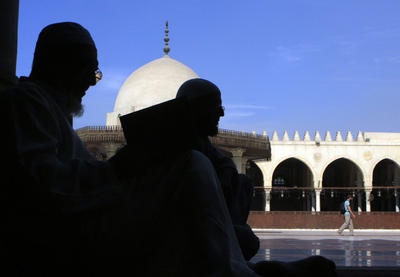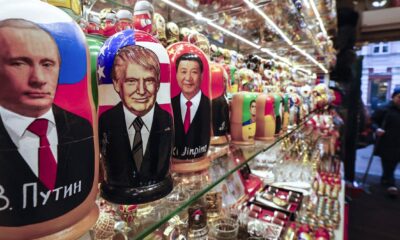Asean
Moderate Islam in Southeast Asia and Egypt
Author: Nazry Bahrawi, NUS A decade after 9/11, the pursuit of ‘moderate Islam’ as the antithesis to ‘radical Islam’ has changed the contours of Islamic theology in Southeast Asia in unimaginable ways. But, while largely positive, this scramble for moderate Islam can run counter to the progressive ideal of pluralism if touted overzealously. The trajectory of this discourse is especially relevant to a post-Mubarak Egypt , where three out of its five declared presidential hopefuls are known Islamist figures. With speculation that the presidential election will be held sometime in early 2012, Egyptian elites will have the next few months to consider the shape of Islam in the public sphere. If they look East, they will certainly find the cases of Indonesia, Malaysia and Singapore instructive. Despite varying expressions of moderate Islam in these nations, they are all aimed at carving out a viable existence for Muslims in the modern world, extolling the virtues of pluralism, rationality and democracy. Indonesia — the world’s most populous Muslim nation — saw the establishment of Jaringan Islam Liberal (the Liberal Muslim Network) in March 2001, which seeks to promote a form of Islam that ‘stresses individual freedom and the liberation from all forms of oppressive structures of politics and society’. In Malaysia, former Prime Minister Abdullah Ahmad Badawi has spearheaded an expression of moderate Islam through the idea of Islam Hadhari , or Civilizational Islam. This expression shares certain key pluralistic ideals with Indonesia’s theology of liberal Islam such as the ‘protection of the rights of minority groups and women’. But Islam Hadhari also serves a more political function for Badawi’s ruling party, UMNO . Latching on to the post-9/11 fear of Islamic fundamentalism, Islam Hadhari was touted as an alternative to the ‘Islamic state’ rhetoric expressed by Badawi’s Islamist political nemesis, the Pan-Malaysian Islamic Party (PAS). Introduced just months before the 2004 general election, Islam Hadhari served UMNO well — PAS managed to retain only seven of its 27 seats. In Singapore, the Muslim minority community has also hitched a ride on the moderate bandwagon. The country’s government-initiated Islamic authority, the Islamic Religious Council of Singapore (MUIS), outlined ten desired attributes of a moderate Muslim as part of its ‘Singapore Muslim Identity’ in 2005. For instance, a good Muslim is ‘also a good citizen’, as well as ‘a contributing member of a multi-religious society and a secular state’. Most noticeably, these differing interpretations of moderate Islam have given rise to a contestation of ideas, which in turn has led to three overarching positive effects. First, this contestation of ideas is democratising interpretations of Sunni Islamic thought among the Muslim masses, deconstructing the view that there is only one Islam, namely the traditionalist kind. This is an encouraging development, and its greatest promise is not the prevention of radical Islam but rather the possibility for Sunni theology to incorporate ‘non-Western’ and ‘secular’ knowledge, most notably philosophy, into its fold. Second, the contestation of Islamic ideas is also seeing the emergence of non-Muslims as an unlikely new polity who can shape public expressions of Islam. Third, greater public engagement is taking place about the role of religions in society generally. This is most clearly seen in Singapore, where race and religion used to be taboo subjects. But this positive climate of greater democratisation in theology could also be unravelled by the overzealousness of the region’s elites in promoting ‘moderate Islam’ as the one true way. This only entrenches orthodoxy and could even lead to religious authoritarianism — thereby running counter to the very idea of pluralism that underpins progressive interpretations of Islam. Perhaps the clearest point of contention is the Singaporean idea that a good Muslim must also be a good citizen. To quote a US Embassy cable exposed by Wikileaks, this has created suspicion that the government, through MUIS, is using Islam ‘to harness religion to ensure their support for … its policies’. Indeed, the media and blogosphere have already cast doubt on the political neutrality of the Mufti in Singapore, who is accused of bolstering government policy through use of the label ‘un-Islamic’. While there is little evidence to suggest that a sense of suspicion towards MUIS is widespread in Singapore, this backlash is reminiscent of the strong distrust that certain sectors of Egyptian society have about the political independence of the Al-Azhar University, considered Sunni Islam’s greatest seat of learning. Most detractors levelled their criticisms at the university’s rector, especially after legislation was enacted in 1961 requiring the rector to only be appointed by the president. Frustration over this was especially stark in 2007, when many chastised the then-sheikh of Al-Azhar for commenting that journalists who spread rumours about Hosni Mubarak’s apparent state of bad health ought to be given 80 lashings. To battle perceptions of orthodoxy, religious elites can look within Islam’s own history to learn from the ninth century mihna . In this episode a group of Muslims, the Mu’tazila, were forcefully pushing forth their brand of rational theology as the one true Islam to the extent of imprisoning, even torturing, detractors. Their authoritarian ways invoked such a forceful counter-reaction from subsequent Islamic thinkers that it prevented the incorporation of reason and philosophy into Sunni theology for centuries afterwards. In embracing progressive ideas, religious elites in Southeast Asia — and Egypt — would do well to avoid a second mihna , and be less zealous in their bid to champion moderate Islam, lest this become a Mu’tazila-styled orthodoxy. Rather, efforts would be better spent sustaining a climate of criticality that supports the contestation of ideas. This alone should ensure the automatic rejection of illiberal interpretations. Nazry Bahrawi is a Research Associate at the Middle East Institute , National University of Singapore. How state governments shape the interpretation of Islam in Malaysia’s courts Obama, Islam, and Indonesia Post-Mubarak Egypt: Is Indonesia the right model?

Author: Nazry Bahrawi, NUS
A decade after 9/11, the pursuit of ‘moderate Islam’ as the antithesis to ‘radical Islam’ has changed the contours of Islamic theology in Southeast Asia in unimaginable ways.

But, while largely positive, this scramble for moderate Islam can run counter to the progressive ideal of pluralism if touted overzealously.
The trajectory of this discourse is especially relevant to a post-Mubarak Egypt, where three out of its five declared presidential hopefuls are known Islamist figures. With speculation that the presidential election will be held sometime in early 2012, Egyptian elites will have the next few months to consider the shape of Islam in the public sphere. If they look East, they will certainly find the cases of Indonesia, Malaysia and Singapore instructive. Despite varying expressions of moderate Islam in these nations, they are all aimed at carving out a viable existence for Muslims in the modern world, extolling the virtues of pluralism, rationality and democracy.
Indonesia — the world’s most populous Muslim nation — saw the establishment of Jaringan Islam Liberal (the Liberal Muslim Network) in March 2001, which seeks to promote a form of Islam that ‘stresses individual freedom and the liberation from all forms of oppressive structures of politics and society’.
In Malaysia, former Prime Minister Abdullah Ahmad Badawi has spearheaded an expression of moderate Islam through the idea of Islam Hadhari, or Civilizational Islam. This expression shares certain key pluralistic ideals with Indonesia’s theology of liberal Islam such as the ‘protection of the rights of minority groups and women’. But Islam Hadhari also serves a more political function for Badawi’s ruling party, UMNO. Latching on to the post-9/11 fear of Islamic fundamentalism, Islam Hadhari was touted as an alternative to the ‘Islamic state’ rhetoric expressed by Badawi’s Islamist political nemesis, the Pan-Malaysian Islamic Party (PAS). Introduced just months before the 2004 general election, Islam Hadhari served UMNO well — PAS managed to retain only seven of its 27 seats.
In Singapore, the Muslim minority community has also hitched a ride on the moderate bandwagon. The country’s government-initiated Islamic authority, the Islamic Religious Council of Singapore (MUIS), outlined ten desired attributes of a moderate Muslim as part of its ‘Singapore Muslim Identity’ in 2005. For instance, a good Muslim is ‘also a good citizen’, as well as ‘a contributing member of a multi-religious society and a secular state’.
Most noticeably, these differing interpretations of moderate Islam have given rise to a contestation of ideas, which in turn has led to three overarching positive effects.
First, this contestation of ideas is democratising interpretations of Sunni Islamic thought among the Muslim masses, deconstructing the view that there is only one Islam, namely the traditionalist kind. This is an encouraging development, and its greatest promise is not the prevention of radical Islam but rather the possibility for Sunni theology to incorporate ‘non-Western’ and ‘secular’ knowledge, most notably philosophy, into its fold. Second, the contestation of Islamic ideas is also seeing the emergence of non-Muslims as an unlikely new polity who can shape public expressions of Islam. Third, greater public engagement is taking place about the role of religions in society generally. This is most clearly seen in Singapore, where race and religion used to be taboo subjects.
But this positive climate of greater democratisation in theology could also be unravelled by the overzealousness of the region’s elites in promoting ‘moderate Islam’ as the one true way. This only entrenches orthodoxy and could even lead to religious authoritarianism — thereby running counter to the very idea of pluralism that underpins progressive interpretations of Islam.
Perhaps the clearest point of contention is the Singaporean idea that a good Muslim must also be a good citizen. To quote a US Embassy cable exposed by Wikileaks, this has created suspicion that the government, through MUIS, is using Islam ‘to harness religion to ensure their support for … its policies’. Indeed, the media and blogosphere have already cast doubt on the political neutrality of the Mufti in Singapore, who is accused of bolstering government policy through use of the label ‘un-Islamic’.
While there is little evidence to suggest that a sense of suspicion towards MUIS is widespread in Singapore, this backlash is reminiscent of the strong distrust that certain sectors of Egyptian society have about the political independence of the Al-Azhar University, considered Sunni Islam’s greatest seat of learning. Most detractors levelled their criticisms at the university’s rector, especially after legislation was enacted in 1961 requiring the rector to only be appointed by the president. Frustration over this was especially stark in 2007, when many chastised the then-sheikh of Al-Azhar for commenting that journalists who spread rumours about Hosni Mubarak’s apparent state of bad health ought to be given 80 lashings.
To battle perceptions of orthodoxy, religious elites can look within Islam’s own history to learn from the ninth century mihna. In this episode a group of Muslims, the Mu’tazila, were forcefully pushing forth their brand of rational theology as the one true Islam to the extent of imprisoning, even torturing, detractors. Their authoritarian ways invoked such a forceful counter-reaction from subsequent Islamic thinkers that it prevented the incorporation of reason and philosophy into Sunni theology for centuries afterwards.
In embracing progressive ideas, religious elites in Southeast Asia — and Egypt — would do well to avoid a second mihna, and be less zealous in their bid to champion moderate Islam, lest this become a Mu’tazila-styled orthodoxy. Rather, efforts would be better spent sustaining a climate of criticality that supports the contestation of ideas. This alone should ensure the automatic rejection of illiberal interpretations.
Nazry Bahrawi is a Research Associate at the Middle East Institute, National University of Singapore.
- How state governments shape the interpretation of Islam in Malaysia’s courts
- Obama, Islam, and Indonesia
- Post-Mubarak Egypt: Is Indonesia the right model?
Continued here:
Moderate Islam in Southeast Asia and Egypt
Asean
Deadly Floods and Landslides Strike Indonesia and Thailand – Vietnam Plus

At least seven people were killed, two others were injured and some were likely to be missing after flash floods and landslides hit the Indonesian eastern province of Maluku on the morning of August 25, according to the locality’s disaster management and mitigation office.
Heavy rainfall, which began on August 24, has triggered the disasters in Ternate city. Many local residents are in urgent need of support, authorities said.
Soldiers, police, local search and rescue personnel, disaster management staff, and volunteers are all involved in the ongoing rescue efforts, which include evacuating those trapped by the landslides and recovering materials from homes swept away by the floods.
Meanwhile in Thailand, local authorities reported that the death toll from a landslide in the popular resort province of Phuket on August 23 has risen to 13, including a Russian couple.
Source : Floods, landslides kill many in Indonesia, Thailand – Vietnam Plus
Asean
Tug of War in Southeast Asia: Can ASEAN-China Dialogue Shift the Scales Toward Peace? – An Analysis

The ASEAN-China dialogue is vital for regional stability, addressing economic cooperation and security challenges, particularly in the South China Sea, amidst significant geopolitical complexities and ongoing territorial disputes.
ASEAN-China Dialogue: A Path Towards Cooperation
The ASEAN-China dialogue plays a pivotal role in Southeast Asia’s diplomacy, fostering economic collaboration while addressing security challenges. Despite advances, particularly in managing tensions in the South China Sea, significant barriers remain to achieving lasting peace and stability in the region. ASEAN’s capacity to maintain its unity and centrality is crucial amidst complex power dynamics involving China and other global players.
Navigating Tensions and Economic Relations
A pressing concern within this dialogue is the South China Sea territorial disputes, which involve multiple ASEAN states and China. The militarization of the area raises alarm among regional stakeholders, necessitating urgent negotiations for a Code of Conduct (COC) to manage conflicts. Additionally, the growing economic interdependence fostered by initiatives like the Regional Comprehensive Economic Partnership (RCEP) strengthens ASEAN-China ties, yet it also raises concerns about potential political leverage influencing member states’ autonomy.
The Challenge of Regional Stability
While the ASEAN-China dialogue offers a framework for promoting peace, its effectiveness is conditioned by broader geopolitical contexts, including China’s rivalry with the United States. The success of this dialogue rests on sustaining a commitment to multilateralism and peaceful dispute resolution. As ASEAN adapts to these complex dynamics, it must reinforce its unity and cooperative strategies, ensuring the region’s stability amid evolving challenges.
Source : Tug Of War In Southeast Asia: Will ASEAN-China Dialogue Tip The Balance Towards Peace? – Analysis
Asean
Cambodia Invites Business Leaders to Join the 21st China-ASEAN Expo in Nanning

Cambodia invites businesspeople to the 21st China-ASEAN Expo in Nanning, promoting trade and investment with incentives like hotel coupons and networking opportunities in various sectors.
Cambodia Invites Participation in CAEXPO 2024
Cambodia is actively encouraging business leaders, investors, and service providers to participate in the upcoming 21st China-ASEAN Expo (CAEXPO), set to take place from September 24-28 in Nanning, China. According to a Ministry of Commerce announcement, CAEXPO serves as a vital platform for trade and investment collaborations between ASEAN nations and China.
To facilitate Cambodian participation, the Ministry invites interested individuals to apply as Trade Visitors by August 31, 2024. Participants will benefit from hotel coupons, dining vouchers, and shuttle services to the expo venue. Furthermore, attendees can engage in business matchmaking in sectors such as food processing, digital technology, and renewable energy products.
Kin Phea, from the Royal Academy of Cambodia, emphasized the advancements in China-ASEAN relations, particularly concerning economic cooperation, tourism, and cultural exchanges. He noted that both sides have become each other’s largest trading partners, enhancing collaboration through the Belt and Road initiative, focusing on infrastructure and sustainable development.
Source : Cambodia encourages businesspeople to partake in 21st China-ASEAN Expo in Nanning













